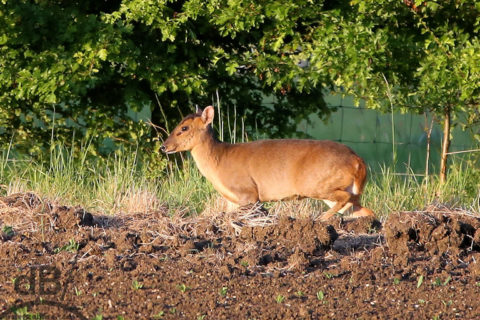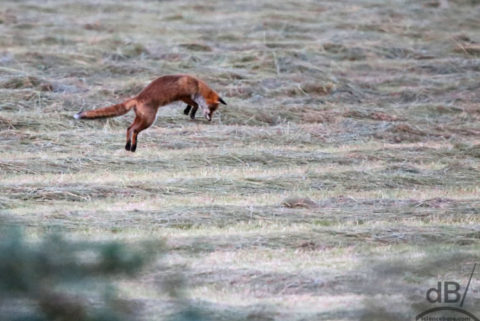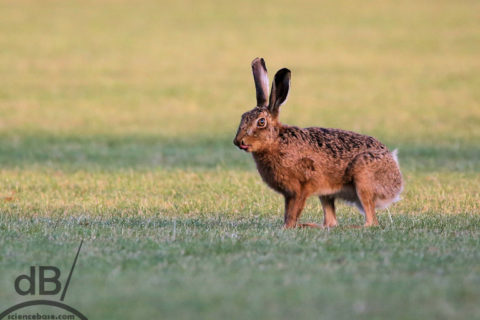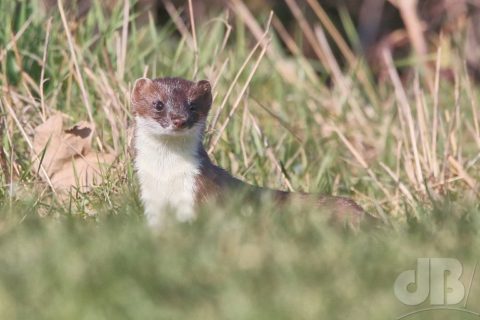Mention going on safari to most people and the assumption is that means a trip to a reserve somewhere far-flung, usually southern Africa, snapping photos of lion, giraffe, elephant, impala, and other big game. A wit might mention in passing the once-trendy concept of a safari supper, but let’s forget foodie affectations and take a safari around our local patch. What are you likely to see on a local safari?
Well, aside from the various birds we usually refer to in this column, the buzzards, kestrels, peregrines, hobbies, red kites, marsh harriers, and all those smaller specimens, there are quite a few large animals around. There’s no point offroading it and rocking up in a “Landie” like you might do on that African safari, the watering holes are not so scarce and there is almost as much chance of spotting your something in your back garden as on the farmland that surrounds the village and the local, small woodlands.

Depending on the time of day, a walk through Les King Wood will often have you stumbling on and perhaps startling a Muntjac or barking deer. Specifically, the non-indigenous species originating in South Asia of Reeves’s muntjac were captive on the Woburn Abbey Estate in the roaring 20s and have since gone feral. Watch out for females with young, they will often make a noise and run out into a field as a decoy leaving their offspring out of sight in a hedgerow. They aren’t confined to the Wood though, you might spot one in and around the village at almost any time of year. Similarly, the various small herds of Roe Deer, which are more prominent on the farmland along Beach Road and in the fields beyond the Cottenham Lode.
An early morning run, as reader Andrew F will tell you, almost always has him stumbling over badgers on the “Birds Estate” in the village. Andrew tells me he sees them a lot and often with young. Foxes too are a common sight for walkers and runners especially in the photographers’ golden hours just as the sun comes up or when it is setting. That said, the inspiration for my Nature Watch report this issue was seeing a red fox in the wide open and newly mown hayfield alongside Rampton Spinney at midday.

The fox spent a lot of time staring at the hay, perhaps hoping for insects or small rodents to make an irresistible appearance. I watched him for ten minutes or so before he skulked off into the trees, presumably still very hungry. Some of the older residents will tell you of frequent sightings of foxes in gardens along the High Street backing on to the Lode and elsewhere in the village. They also might point out that fewer and fewer are seen even out in the more “countryside” areas beyond. Although chicken-keepers still have to be vigilant and several have lost their birds to the local vulpines nevertheless.
There are plenty of rabbits around these here parts, although thankfully they are not endemic to the allotments. That site does, however, have a European hare that makes a periodic appearance. There are plenty of that particular species around, often to be seen haring about in the fields beyond the Les King Wood and even on the back field of the recreation ground.

Moles are a little bit more an elusive target of our local safari, given their general subterranean existence. I have, however, once seen one of these velvetine mammals pop its head up from its hole. Seen slightly more often are stoats. If spotted these animals will often dart into the undergrowth but then come back out for a second look, just to check how feeble a predator you really are. There are water voles too, living in burrows in the banks of the Lode. Unfortunately, the Grey Heron sees this small swimming mammal as just another snack and I have seen one these birds standing atop the bank gulping down a water vole whole.

Meanwhile, the maintenance work the Environment Agency carries out there always takes the water voles into account and their work is done very much with protecting this species’ habitat in mind. I spoke to one of their engineers recently who told me as much and also pointed out some otter scat on stones beneath the Rampton Bridge, so there’s another mammalian target on our local safari.
Of course, if you’re unable or unwilling to venture out on our local safari, you might still be able to see some of the small game that lives alongside us in the village. Hedgehogs, once a frequent sight in their two-dimensional form on roads across the country, are seen far less often. It is important to make routes for them to traverse our gardens and to ensure ponds have escape routes to prevent drowning. Leaving gardens with some unkempt areas will give our prickly friends a place to hide and hibernate. Hedgehogs are lactose intolerant though, so don’t put milk out for them. They are omnivores, however, and will see a bit of soft cat food as a treat, although it is best to leave them to their natural diet of invertebrates.
Oh, and there are lots of American immigrants in the form of the grey squirrel (Sciurus carolinensis) in our environs as well as the melanistic form, the black squirrel.
If you have seen any interesting natural happenings in and around the village do let me know, you can email me [email protected] Photos and additional nature reporting on my website https://sciencebase.com